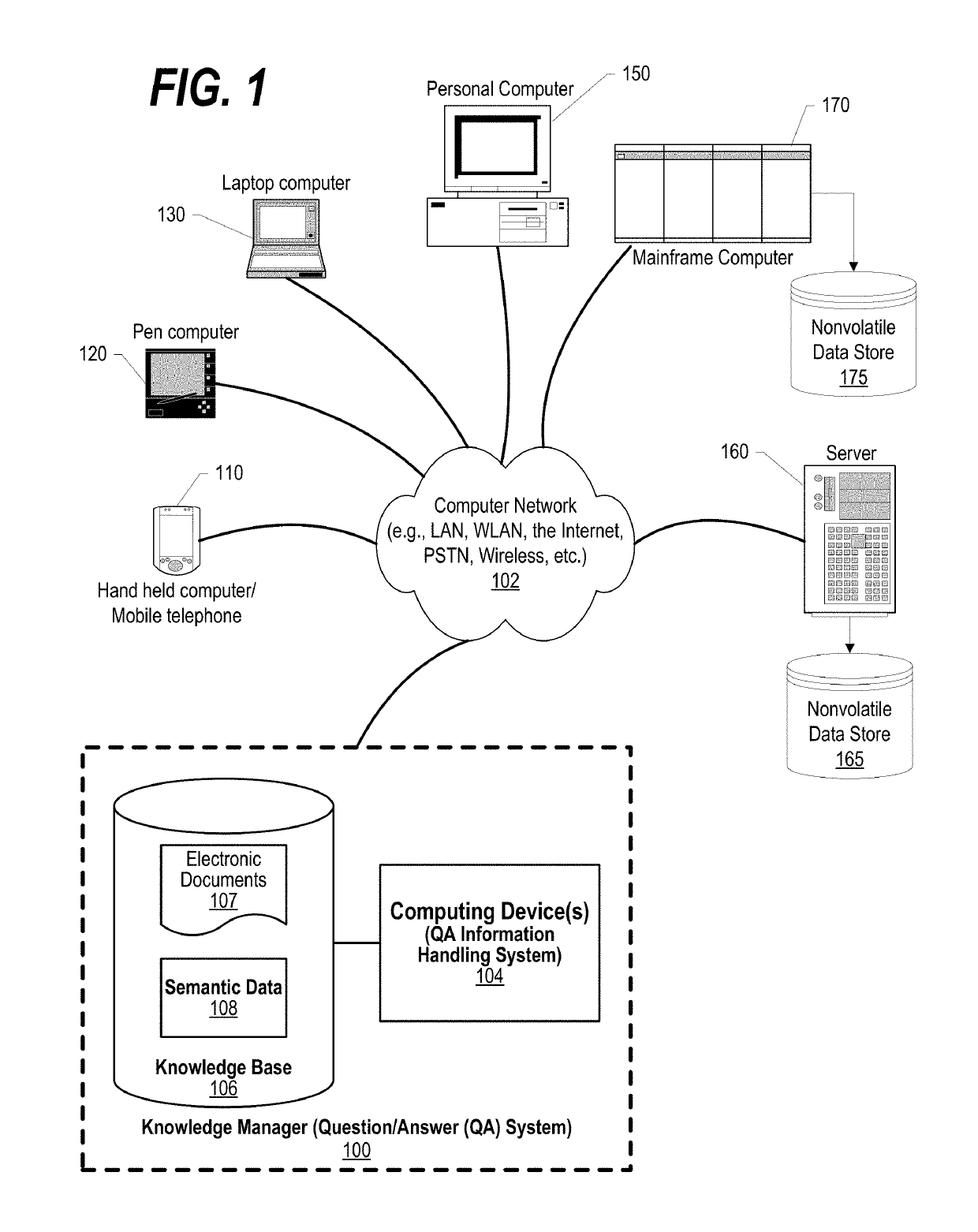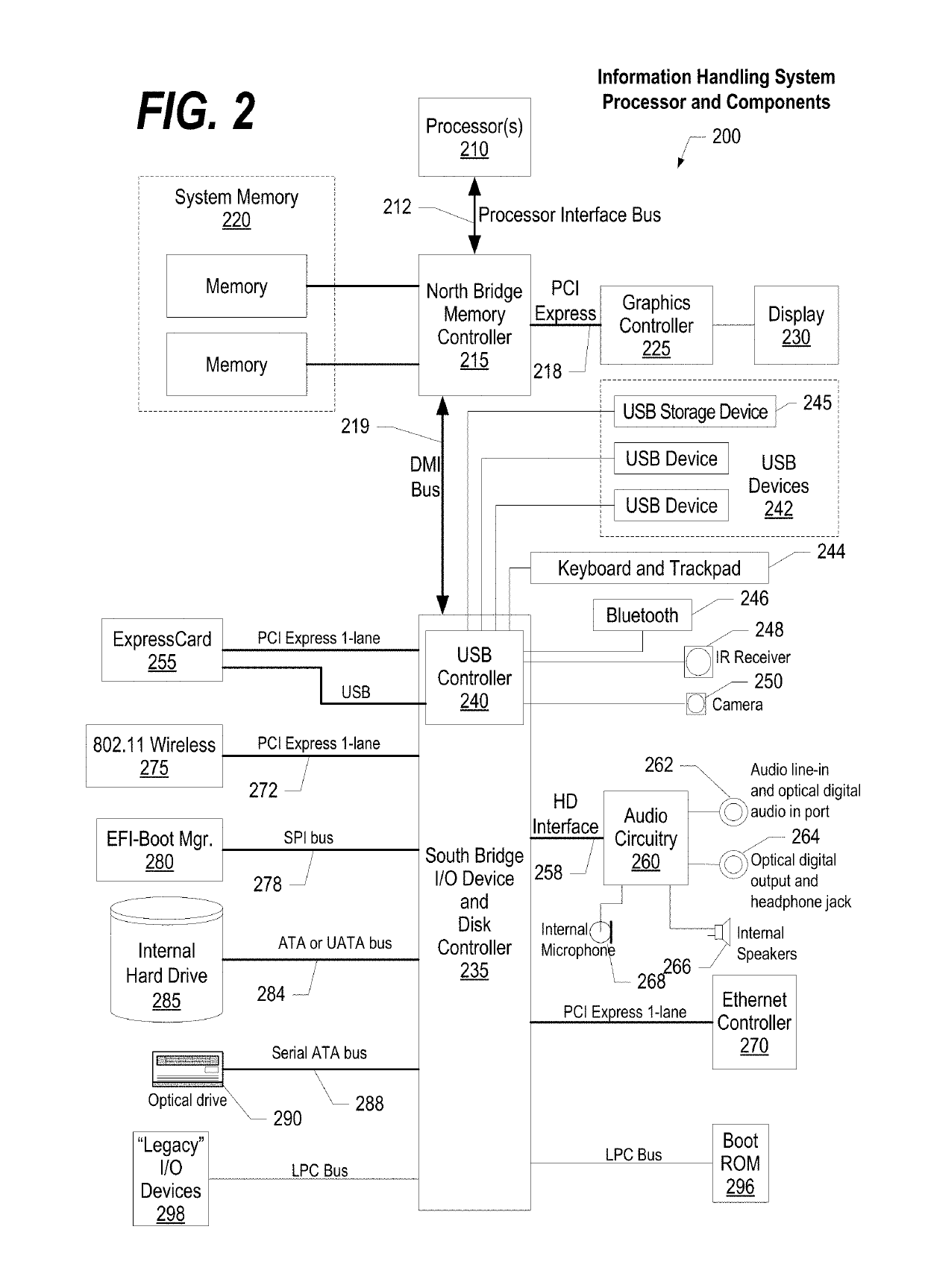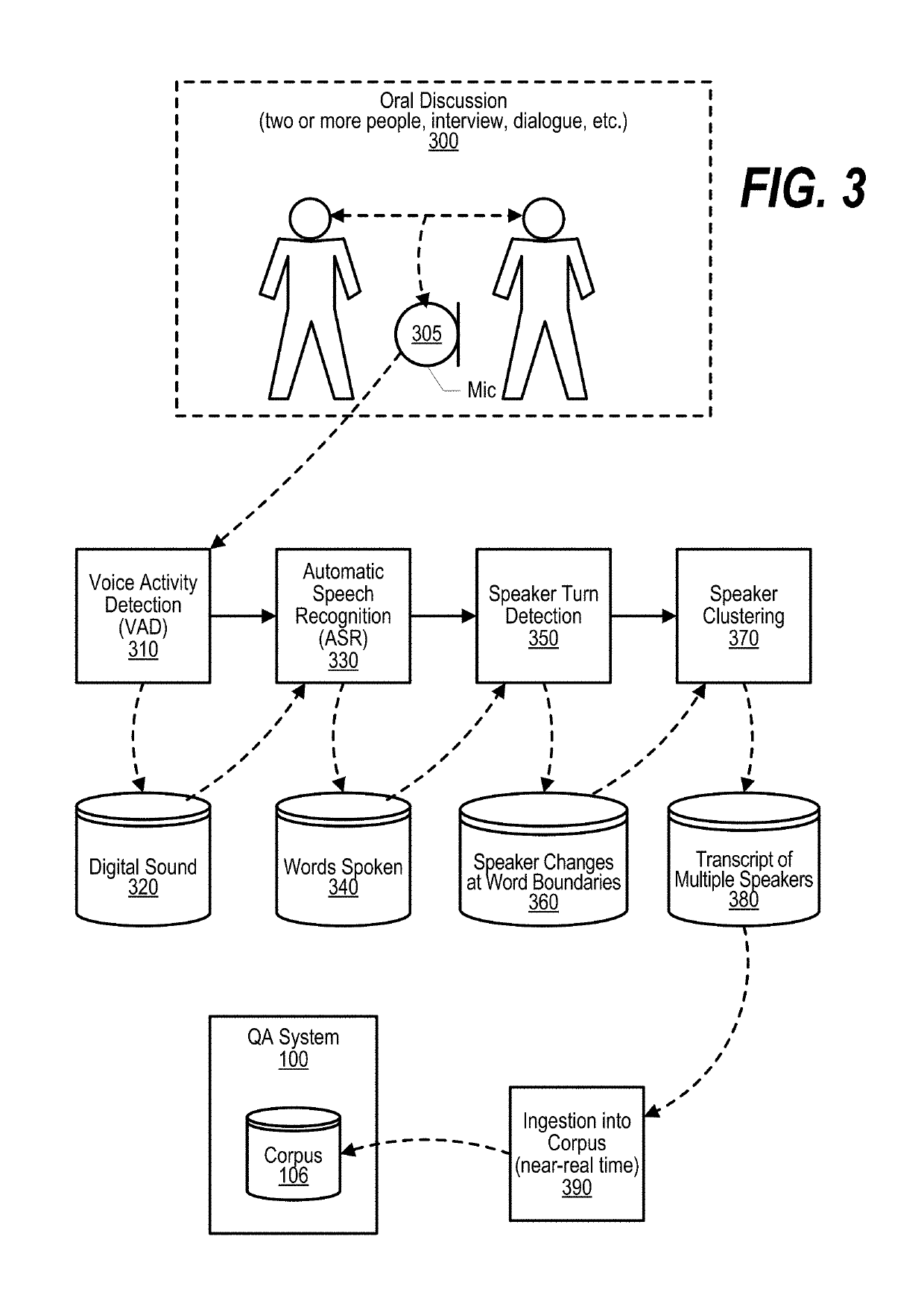Diarization Driven by the ASR Based Segmentation
a technology of asr and segmentation, applied in the field of asr based segmentation, can solve the problems of less accurate turn detection, noisy turn detection process, and large number of false positives created by the force system
- Summary
- Abstract
- Description
- Claims
- Application Information
AI Technical Summary
Benefits of technology
Problems solved by technology
Method used
Image
Examples
Embodiment Construction
[0015]FIGS. 1-8 depict an approach that can be executed on the information handling system shown in FIGS. 1-2. The approach described in FIGS. 3-8 provides for voice activity detection (VAD) to feed data to an automatic speech recognition system that feeds data to a speaker turn detection function that inputs data to a speaker clustering function.
[0016]The proposed approach can address most of the issues mentioned above for the following reasons. First, the VAD followed by ASR filters out most of the non-speech segments, improving consequently the quality of the statistics. The ASR output now corresponds to specific words estimated by the decoder, so there are no non-verbal segments included in the post-ASR pipeline. A basic assumption utilized by the approach is that each speaker will utter a whole word before a speaker turn occurs. In other words, the speaker turns occur at the word boundaries, as estimated by the ASR output, rather than essentially anywhere in the audio stream as...
PUM
 Login to View More
Login to View More Abstract
Description
Claims
Application Information
 Login to View More
Login to View More - R&D
- Intellectual Property
- Life Sciences
- Materials
- Tech Scout
- Unparalleled Data Quality
- Higher Quality Content
- 60% Fewer Hallucinations
Browse by: Latest US Patents, China's latest patents, Technical Efficacy Thesaurus, Application Domain, Technology Topic, Popular Technical Reports.
© 2025 PatSnap. All rights reserved.Legal|Privacy policy|Modern Slavery Act Transparency Statement|Sitemap|About US| Contact US: help@patsnap.com



